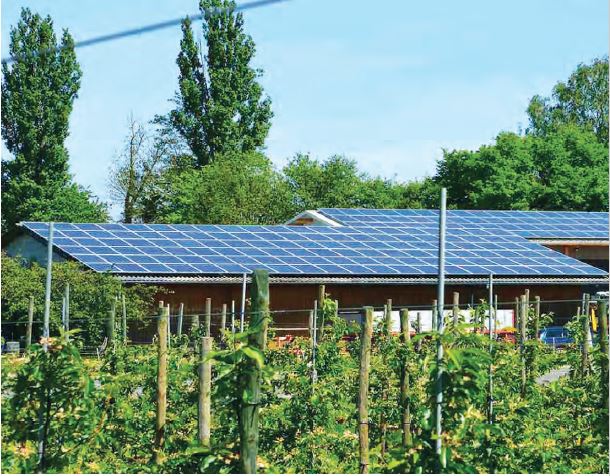 |
|
 |
STORY
DETAILS |
 |
|
| |
| |
 |
| Cover Story
|
 |
 |
| Textiles’ – the word brings up images of beautiful drapes – cotton, silk, chiffon, lace. Whether it is the material draped on the figurine of the lady f... |
|
 |
| |
read more... |
 |
|
 |
Lead Article
Textiles the word brings up images of beautiful drapes cotton, silk, chiffon, lace. Whether it is the material draped on the figurine of the lady from Mohenjadaro, the stylish drapes of Cleopatra, the ball dance gowns of the Victorian Era or the lovely dresses worn by our own queens and princesse...
read more... |
|
 |
| Articles |
 |
 |

|
|
Tapping Sustainable Energy Alternatives
|
|
|
The second lead article, which is also focus article, is written by Shri N Bhadran Nair. Citing a report of the World Health Organisation, the author has advocated for tapping sustainable energy alternatives
|

|

|

|

|
|
Financing Renewables in India
|
|
|
The third article is written by Shri P C Maithani, Adviser, Ministry of New and Renewable Energy. He has focussed on renewable energy resources
|

|

|

|
|
Steps to Achieve India’s Solar Potential
|
|
|
The special article is written by Sumant Sinha, Chairman and Managing Director of ReNew Power. He opines that India must also honour its global commitments on curbing greenhouse gas emissions
|

|

|
|
|
|
|
|
|
|
Obstacles to ‘Total Sanitation’ : Evidence from District Level Household Survey
Gregory Pierce |
|
 INADEQUATE TOILET use directly contributes to high rates of morbidity and mortality within India. Approximately, one fourth of the global population without access to adequate sanitation resides in India; and over 600 million people in India defecate in the open UNICEF, 2012). The combined lack of access and use decreases India’s GDP by at least 6.4 per cent annually (WSP2011; Chambers and Von Medeazza 2013). Despite a strong research focus on sanitation interventions, understanding of the determinants of inadequate sanitation remains poor.
This paper uses spatial analysis techniques to explain variation in toilet use at the district scale across India. A test of global spatial auto-correlation confirms that sanitation use is strongly clustered at the district level. Tests of local spatial auto correlation also reveal that poor sanitation is clustered in districts that have high under-five mortality rates. A spatial lag model is employed to demonstrate the persistence of spatial clustering even after accounting for standard socioeconomic and institutional correlates of toilet use.The location of these clusters and the explanatory power at district level appear to reflect the mechanisms that are not captured by state-level analysis. INADEQUATE TOILET use directly contributes to high rates of morbidity and mortality within India. Approximately, one fourth of the global population without access to adequate sanitation resides in India; and over 600 million people in India defecate in the open UNICEF, 2012). The combined lack of access and use decreases India’s GDP by at least 6.4 per cent annually (WSP2011; Chambers and Von Medeazza 2013). Despite a strong research focus on sanitation interventions, understanding of the determinants of inadequate sanitation remains poor.
This paper uses spatial analysis techniques to explain variation in toilet use at the district scale across India. A test of global spatial auto-correlation confirms that sanitation use is strongly clustered at the district level. Tests of local spatial auto correlation also reveal that poor sanitation is clustered in districts that have high under-five mortality rates. A spatial lag model is employed to demonstrate the persistence of spatial clustering even after accounting for standard socioeconomic and institutional correlates of toilet use.The location of these clusters and the explanatory power at district level appear to reflect the mechanisms that are not captured by state-level analysis. |
|
|
|
|
|
|
|
|
|
|
 |

|
Regional Languages
|
 |
|
|
 |
|
Regular
Column |
|
J&K Window : |

|
|
Do you know? : What is Forensic Auditing |
Forensic auditing refers to the auditing with the main aim to employ accounting techniques and methods to gather evidence to investigate the crimes on financial front such as theft, fraud etc.

|
|
|
 |
|
 |
 |